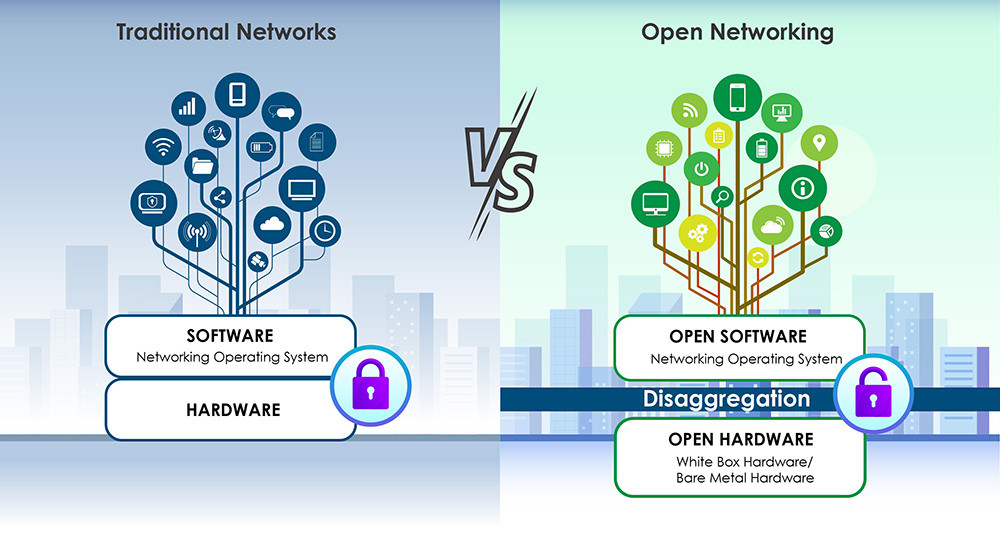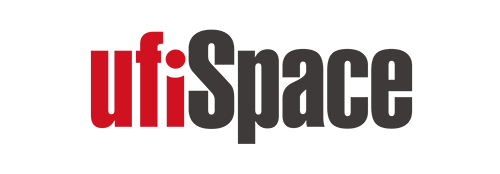The Future is OPEN - Exploring Open Networking Pros and Cons
In recent years, the networking landscape has transformed significantly, with the widespread adoption of open networking and the separation of hardware and software components. This shift has been driven by the projected increase in data traffic, especially in AI/ML applications, making open networking solutions increasingly essential.
Leading players in the industry, including hyperscalers, enterprise data centers, and telecommunication companies are transitioning from traditional networks and proprietary platforms to open networking to gain greater flexibility, improved ROI, and enhanced customer services. However, as with any major transition, challenges accompany these advancements. In this blog, we'll explore the pros, cons, and implications of open networking.
WHAT IS OPEN NETWORKING
Open networking is a transformative connectivity approach that utilizes open standards and bare-metal hardware, alongside various independent Open Network Operating Systems (NOS). It offers enterprises the freedom to mix and match hardware devices according to their specific needs, without being tied to a single vendor and their proprietary software. This separation of hardware and software is commonly known as disaggregations.

ADAVATNAGES OF OPEN NETWORKING OVER TRADITIONAL NETWORKS
Open networking can serve as a critical strategy for adapting to the anticipated increase in data traffic and addressing today's economic challenges. It offers several key benefits over traditional networks:
• Enhced Flexibility
Open networking provides greater flexibility compared to traditional networks, offering enterprises a diverse range of deployment options. With open networking, organizations enjoy the liberty of selecting best-of-breed solutions for their specific needs.
• Cost Savings
Open networking typically offers cost savings compared to proprietary systems. By decoupling hardware and software components, organizations can ensure optimal choices that specifically address unique needs, resulting in lower upfront (CapEx) and operational (OpEx) costs, particularly in the long run.
• Interoperability
A key advantage of open networking systems is their ability to connect more easily with a diverse range of hardware and software compared to closed systems This capability simplifies the integration process, reduces vendor lock-in, and facilitates smoother transitions to new technologies.
• Innovation and Greater Agility
The open standards architecture and community-driven development model associated with open networking enable faster innovation cycles. Disaggregated networking allows for greater agility in deploying new features and services independently in both hardware and software solutions.
DRAWBACKS ASSOCIATED WITH OPEN NETWORKING
While open networking presents numerous advantages, organizations must carefully and thoroughly evaluate the potential drawbacks before transitioning their network infrastructure to open networking.
• Complexity
Open networking may pose greater management complexity compared to proprietary solutions, as it necessitates integrating various components from multiple vendors.
• Inefficient Vendor Support
Organizations may encounter difficulties accessing the same level of support and technical assistance available with proprietary solutions, as open networking solutions are not tied to a single vendor. This can potentially impede problem-solving and issue resolution processes.
• Ongoing Support & Warranty Concerns
Transitioning to open networking raises concerns about support and warranties due to the diverse vendor ecosystems. However, ongoing development and maintenance are crucial for system adaption, requiring continued investment in personnel and resources.
Today, the maturation of the open network ecosystem effectively addresses these concerns and drawbacks. UfiSpace emerges as a market pioneer in open networking solutions, providing a comprehensive switch/router lineup ranging from 1G to 800G or Distributed Disaggregated Chassis (DDC). This modernizes your network infrastructure to meet AI/ML data demands and ensures future-ready enterprises.
Through partnerships with global Open Networking Operating Systems (NOS) providers such as Arrcus, Drivenets, and IP Infusion, as well as system integrators (SIs) and other key ecosystem partners, Ufispace offers a one-stop shopping experience, drawing from expertise to provide tailored solutions. Additionally, we provide ongoing maintenance and support, ensuring seamless operations and cost reduction customized to meet customers' needs, enabling redirected savings for further business growth.
In conclusion, successful open networking solutions require strategic design and long-term maintenance focus. Partnering with industry-leading technology partners can offer valuable insights and mitigate financial and interoperability risks throughout implementation.
The future is indeed open, and it's time to embrace its boundless possibilities.
Learn more about our comprehensive data center and telecom platform
About the Author
 |
UfiSpace Marketing Team |
